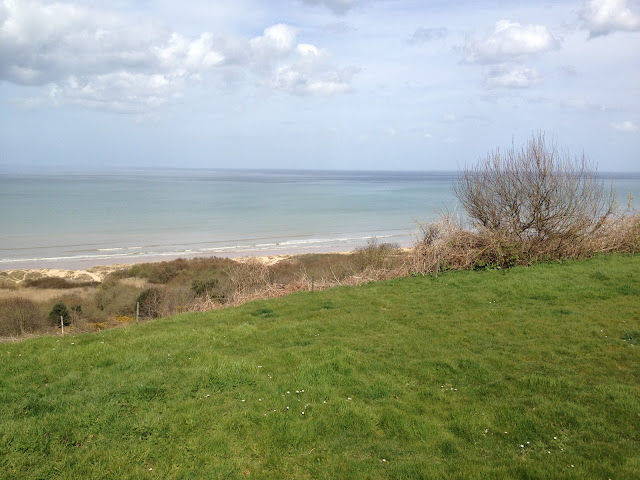Written by Chloe Shores (Le Musée de la Paix)
Our first stop today was the WWII museum – Le Musée de la Paix. Our visit began with a brief explanation of how the museum is laid out. It is divided into two sections. One section included life before 1945, the events leading up to the war and information about WWII. The other section was covered after the war ended, yet it was mainly about the Cold War. We only visited the side that educated us on before 1945. We did this because we only had an hour and a half. Also, currently in school, we are learning about the events leading up to and the events in WWII, and also, the rest of our day was based on what happened during the war.
This museum was very interesting to me because in school we mainly learn about America’s involvement in the war and how the war affected the United States. However, the museum taught us about how the war affected many other countries and how they were involved in the war. Before the attack on Pearl Harbor, America had a neutral status in the war (even though America did not agree with the Nazi regime). The attack on Pearl Harbor forced the Americans to enter the war and join the Allied forces. Even though America joined at a later stage of the war, the American forces were vital to the success and conclusion of the Second World War. The museum not only showed the American story, but the war from French, English and German perspectives. Most countries entered the war at the beginning stages, and the museum educated us on the many battles that were fought previous to America’s involvement, the lives sacrificed for this cause, and the devastation that other countries faced. The museum also really put WWII into perspective for me. The pictures, numbers and exhibits were very moving and I learned quite a lot. Although it was hard to learn about the great sacrifices and devastation that the world faced, I appreciated the experience and my eyes have been opened to see how lucky I am to live in a free country.
Written by Omar Pasha (The Memorial)
As we entered the memorial of the fallen Americans who fought on D-Day, we were greeted by this message: “To these we owe the high resolve that the cause for which they died shall live.” After seeing this touching phrase we entered the memorial grounds to witness rows and rows of headstones covering fields of grass. On each headstone there was the name, place of birth, date of birth and their rank in the military. The group of both French and American students parted to see different headstones around the memorial. In some cases instead of a cross as a headstone, there was the Star of David if the fallen was Jewish. Throughout the memorial there were many elderly men who looked to be veterans. It was incredibly moving to see veterans and loved ones, cry in front of a deceased comrades or family members' headstones.
Encrypted on one of the first headstones was: “Here rests in honored glory a comrade in arms known but to god.” This saying was inscribed for the people who could not be identified. Surprisingly, these headstones had the most flowers on them. It was emotional to see how much people cared about someone who risked their life for a just cause but didn’t even have any sort of relation with them. This was truly an unforgettable day and it is comforting to know that these brave men didn’t die in vain.
Written by David Oluyadi (Landing Beaches)
Today, as a group with our exchange students, we visited a museum in Caen. We took a tour and saw different important pieces that gave us an idea of what was happening during the war. In the museum I observed the main part of the landing beaches. The landing beaches were code named Juno, Sword, Gold, Utah, and Omaha. Omaha is the most deadliest, trickiest, and most infamous beach because everything for the Americans went wrong. Three phases were planned to take over the beaches of Normandy. First was the dropping of the paratroopers behind enemy lines. Second was the dropping of the bombs to destroy enemy forces, and create craters that the soldiers could use as shelter. Last was the actual invasion of the troops. Many Americans died before even getting on the beach, and many soldiers died, drowning in water.
After leaving the museum, we drove past spots where paratroopers could have landed. We also saw the cemetery. When we stopped for a while to see the beach named Gold, I tried to imagine myself as a soldier fighting for freedom, but I knew that I could never feel the same way they felt in that situation. This day gave me one more reason why I am happy to be an American.
































.jpg)






.jpg)







.jpg)






